Xuejian Li
Deep Automated Mechanism Design for Integrating Ad Auction and Allocation in Feed
Jan 03, 2024



Abstract:E-commerce platforms usually present an ordered list, mixed with several organic items and an advertisement, in response to each user's page view request. This list, the outcome of ad auction and allocation processes, directly impacts the platform's ad revenue and gross merchandise volume (GMV). Specifically, the ad auction determines which ad is displayed and the corresponding payment, while the ad allocation decides the display positions of the advertisement and organic items. The prevalent methods of segregating the ad auction and allocation into two distinct stages face two problems: 1) Ad auction does not consider externalities, such as the influence of actual display position and context on ad Click-Through Rate (CTR); 2) The ad allocation, which utilizes the auction-winning ad's payment to determine the display position dynamically, fails to maintain incentive compatibility (IC) for the advertisement. For instance, in the auction stage employing the traditional Generalized Second Price (GSP) , even if the winning ad increases its bid, its payment remains unchanged. This implies that the advertisement cannot secure a better position and thus loses the opportunity to achieve higher utility in the subsequent ad allocation stage. Previous research often focused on one of the two stages, neglecting the two-stage problem, which may result in suboptimal outcomes...
EAA-Net: Rethinking the Autoencoder Architecture with Intra-class Features for Medical Image Segmentation
Aug 19, 2022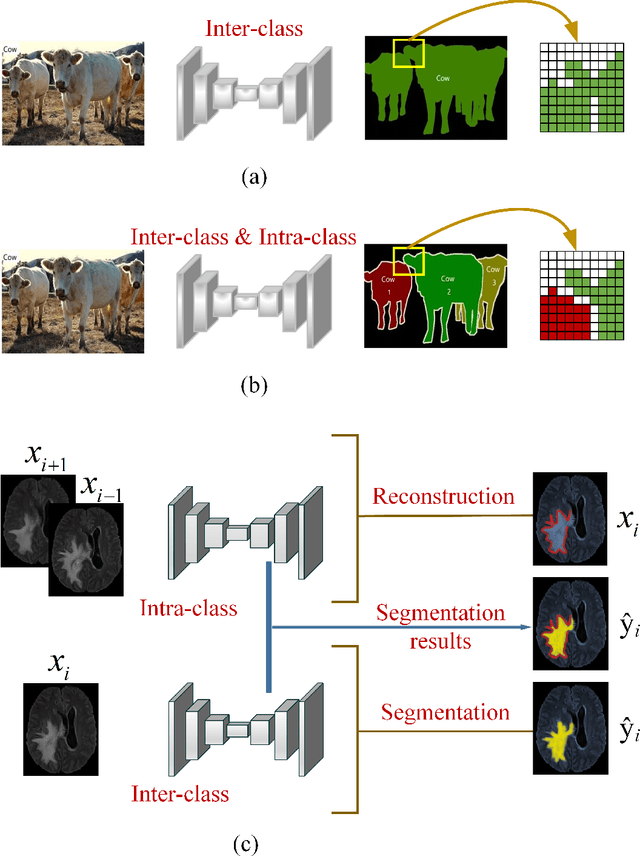

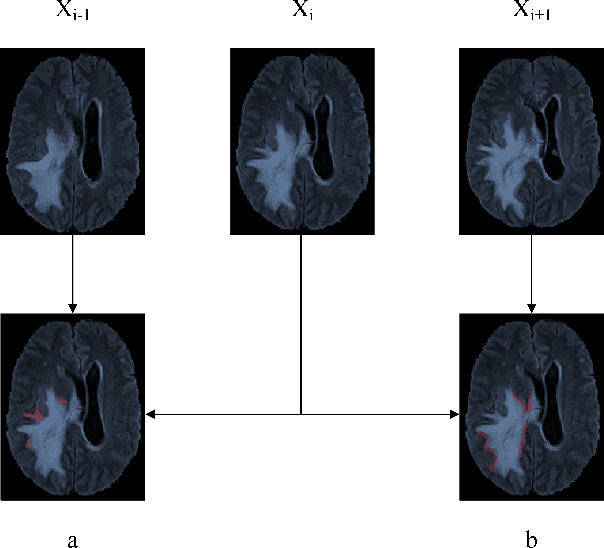
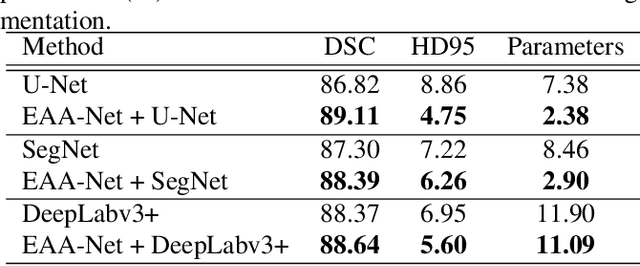
Abstract:Automatic image segmentation technology is critical to the visual analysis. The autoencoder architecture has satisfying performance in various image segmentation tasks. However, autoencoders based on convolutional neural networks (CNN) seem to encounter a bottleneck in improving the accuracy of semantic segmentation. Increasing the inter-class distance between foreground and background is an inherent characteristic of the segmentation network. However, segmentation networks pay too much attention to the main visual difference between foreground and background, and ignores the detailed edge information, which leads to a reduction in the accuracy of edge segmentation. In this paper, we propose a light-weight end-to-end segmentation framework based on multi-task learning, termed Edge Attention autoencoder Network (EAA-Net), to improve edge segmentation ability. Our approach not only utilizes the segmentation network to obtain inter-class features, but also applies the reconstruction network to extract intra-class features among the foregrounds. We further design a intra-class and inter-class features fusion module -- I2 fusion module. The I2 fusion module is used to merge intra-class and inter-class features, and use a soft attention mechanism to remove invalid background information. Experimental results show that our method performs well in medical image segmentation tasks. EAA-Net is easy to implement and has small calculation cost.
NMA: Neural Multi-slot Auctions with Externalities for Online Advertising
May 20, 2022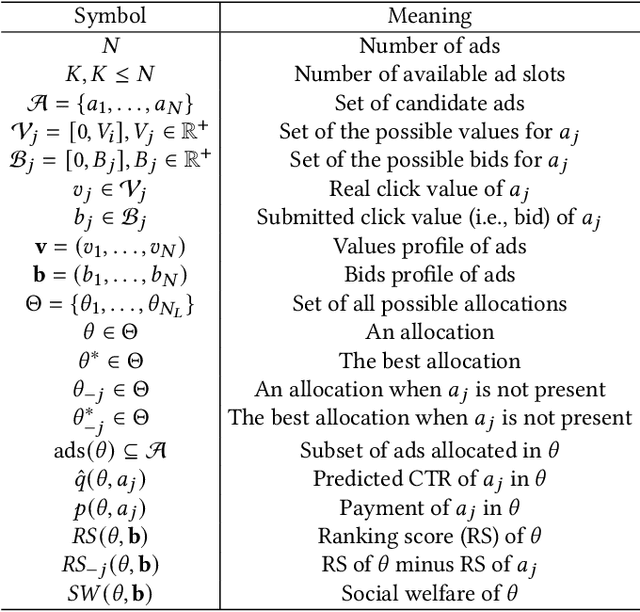
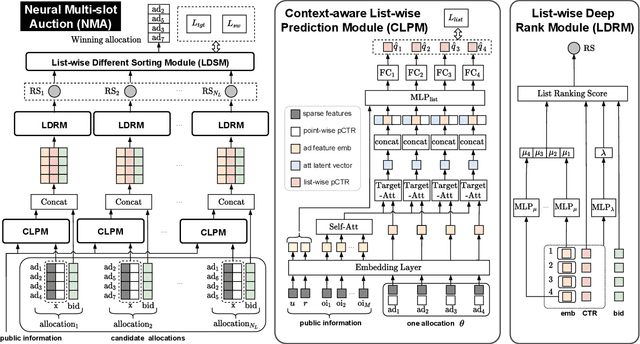


Abstract:Online advertising driven by auctions brings billions of dollars in revenue for social networking services and e-commerce platforms. GSP auction, which is simple and easy to understand for advertisers, has almost become the benchmark for ad auction mechanisms in the industry. However, the allocation stability of GSP depends on the separable CTR assumption, which means that GSP considers neither position-dependent externalities nor ad-dependent externalities in multi-slot scenario, leading to suboptimal performance. Some GSP-based deep auctions (e.g., DeepGSP, DNA) have attempted to upgrade GSP with deep neural networks, while only modeling local externalities and thus still suboptimal. On the other hand, although VCG-based multi-slot auctions (e.g., VCG, WVCG) take externalities into consideration, they lack an efficient balance of both revenue and social welfare. In this paper, we propose a novel auction named Neural Multi-slot Auction (NMA) to tackle the above-mentioned challenges. Specifically, we model the global externalities effectively with a context-aware list-wise prediction module to achieve better performance. We design a list-wise deep rank module to guarantee incentive compatibility in end-to-end learning. Furthermore, we propose an auxiliary loss for social welfare to effectively reduce the decline of social welfare while maximizing revenue. Experiment results on both offline large-scale datasets and online A/B tests demonstrate that NMA obtains higher revenue with balanced social welfare than other existing auction mechanisms (i.e., GSP, DNA, WVCG) in industrial practice, and we have successfully deployed NMA on Meituan food delivery platform.
TranSiam: Fusing Multimodal Visual Features Using Transformer for Medical Image Segmentation
Apr 26, 2022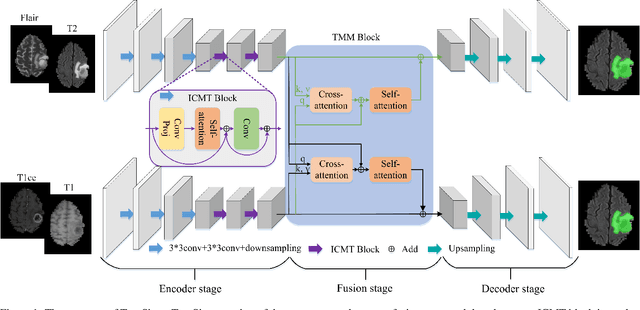

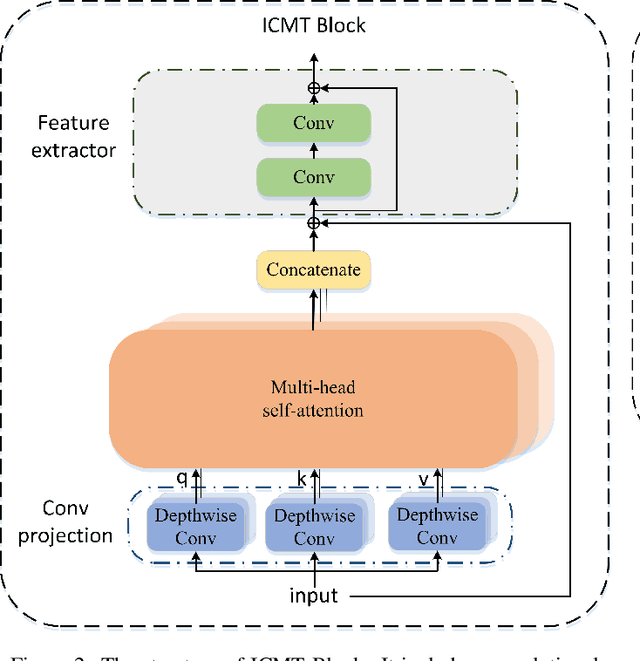

Abstract:Automatic segmentation of medical images based on multi-modality is an important topic for disease diagnosis. Although the convolutional neural network (CNN) has been proven to have excellent performance in image segmentation tasks, it is difficult to obtain global information. The lack of global information will seriously affect the accuracy of the segmentation results of the lesion area. In addition, there are visual representation differences between multimodal data of the same patient. These differences will affect the results of the automatic segmentation methods. To solve these problems, we propose a segmentation method suitable for multimodal medical images that can capture global information, named TranSiam. TranSiam is a 2D dual path network that extracts features of different modalities. In each path, we utilize convolution to extract detailed information in low level stage, and design a ICMT block to extract global information in high level stage. ICMT block embeds convolution in the transformer, which can extract global information while retaining spatial and detailed information. Furthermore, we design a novel fusion mechanism based on cross attention and selfattention, called TMM block, which can effectively fuse features between different modalities. On the BraTS 2019 and BraTS 2020 multimodal datasets, we have a significant improvement in accuracy over other popular methods.
 Add to Chrome
Add to Chrome Add to Firefox
Add to Firefox Add to Edge
Add to Edge